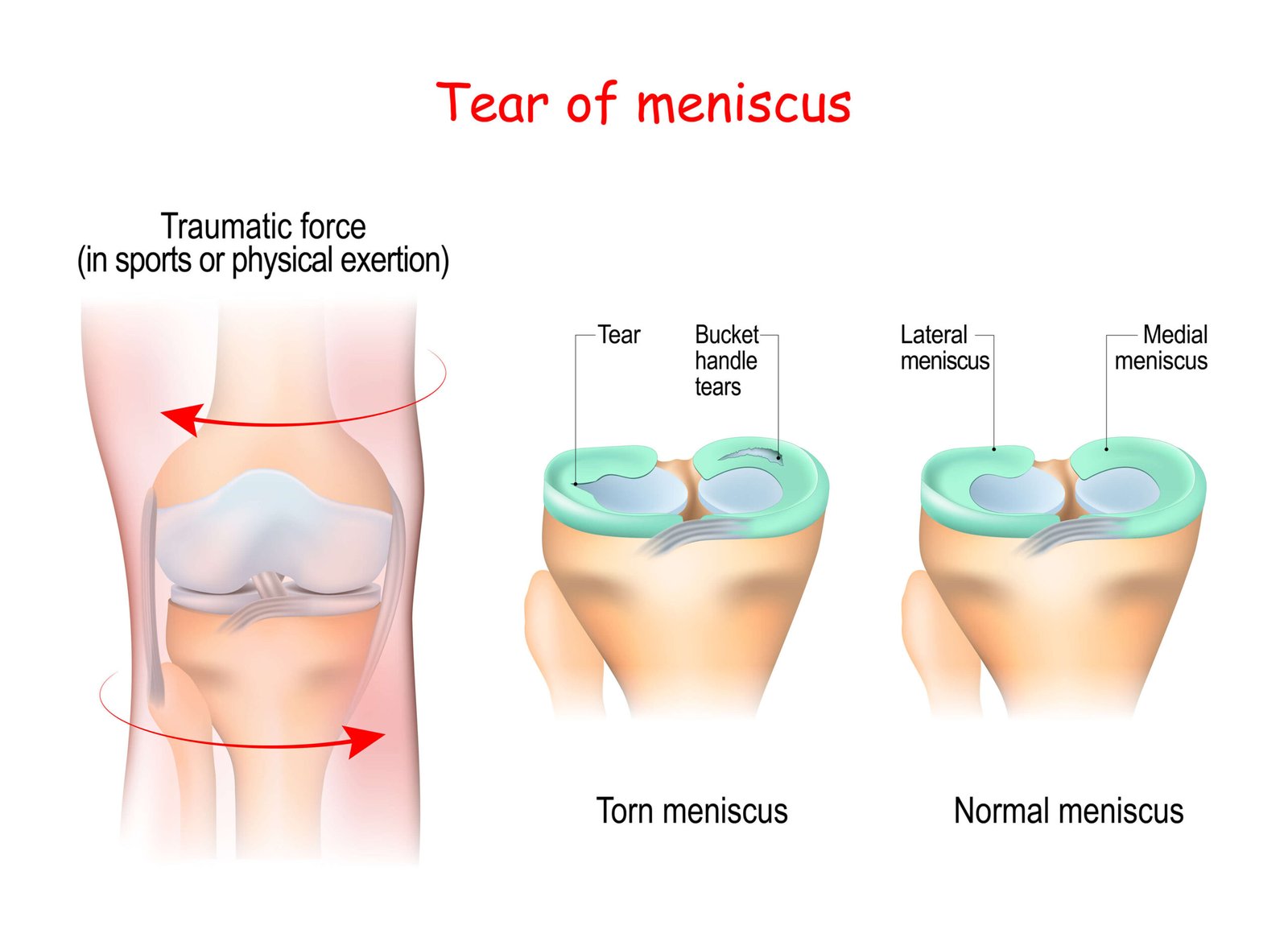
Dr. Sanjay Barik
Knee & Shoulder Surgeon
Meniscus Tear

What is Meniscus Tear
The meniscus serves as a vital piece of cartilage within the knee, providing cushioning and stability to the joint. Acting as a shock absorber, it shields the bones from damage caused by friction. Each knee contains two of these cartilage structures:
- The medial meniscus, located on the inner side of the knee.
- The lateral meniscus, positioned on the outer side of the knee.
Both menisci are curved in a C-shape, offering cushioning between the shinbone (tibia) and the thighbone (femur). Together, they play a crucial role in maintaining the stability of the knees.
What Causes a Meniscus Tear?
A meniscal tear can occur when sudden changes in direction during running or twisting the upper leg while the foot is stationary and the knee is bent. These tears often coincide with other knee injuries, such as an anterior cruciate ligament (ACL) injury. In some instances, a fragment of the torn cartilage can dislodge and become lodged in the knee joint, leading to locking sensations.
However, the menisci also deteriorate with age, increasing the likelihood of tears occurring from simple movements, such as awkward turns when rising from a chair. More than 40% of individuals aged 70 or older have experienced a torn meniscus.
Types of Meniscus Tears
Different types of meniscus tears can be identified through MRI scans, which offer detailed images of the knee using powerful magnets and radio waves.
- Medial Meniscus Tear: Occurs in the inner aspect of the knee joint, limiting mobility due to its firm attachment to ligaments.
- Lateral Meniscus Tear: Affects the outer side of the knee joint, with relatively more mobility as it’s less tightly attached.
- Bucket Handle Meniscus Tear: Represents nearly 10% of all tears, causing the knee to lock due to a vertical tear fragment along the meniscus length.
- Radial Tear: Found in about 28% of medial meniscus tears, running perpendicular to both the tibia and meniscus fibers, potentially disrupting weight distribution.
- Posterior Horn Medial Meniscus Tear: Often linked to heavy lifting or sports-related twisting motions, leading to gradual onset of knee pain and potential stress fractures.
- Meniscus Degenerative Tear: Resulting from aging and frequently associated with knee osteoarthritis, treatment typically involves exercise, pain management, and weight management.
Meniscus Tear Symptoms
Symptoms indicative of a meniscus tear comprise:
- Knee pain
- Swelling
- Sensation of popping during the injury
- Difficulty bending and straightening the leg
- Occasional locking or “sticking” of the knee
Meniscus Tear Treatment
Treatment for meniscal tears varies depending on factors like tear size, location, age, activity level, and associated injuries.
Fortunately, not all meniscal tears necessitate surgery. If your knee remains stable, isn’t locking up, and symptoms diminish, nonsurgical approaches may suffice. To expedite recovery, you can employ the RICE principles:
- Rest: Cease activities causing the injury, limiting movement to walking if knee pain persists. Crutches can aid pain relief.
- Ice: Apply ice for 15-20 minutes every 3-4 hours for 2-3 days or until pain and swelling subside.
- Compression: Use an elastic bandage or neoprene sleeve to manage swelling.
- Elevation: Elevate your knee with a pillow under the heel while sitting or lying down.
Additional measures include:
- Anti-inflammatory Medications: NSAIDs like Advil or Aleve alleviate pain and swelling but may pose side effects like bleeding and ulcers. Use sparingly unless advised otherwise by your doctor.
- Stretching and Strengthening Exercises: These can reduce knee stress. Consult a physical therapist for guidance.
- Avoidance of Impact Activities: Steer clear of running and jumping to prevent further strain on the knee.


